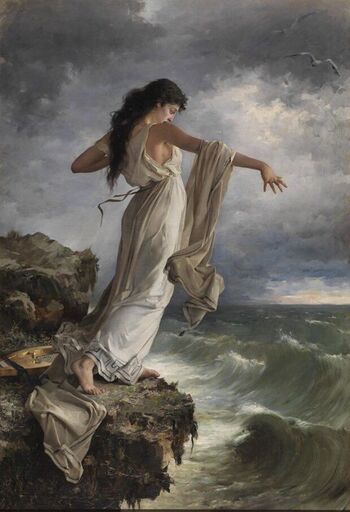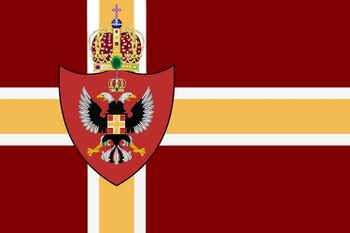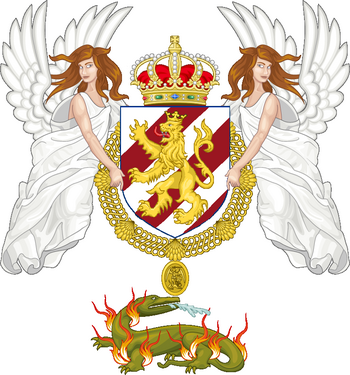National symbols of Eastarland: Difference between revisions
No edit summary |
No edit summary |
||
| Line 21: | Line 21: | ||
|align="center"|{{wp|National personification}} | |align="center"|{{wp|National personification}} | ||
|align="center"|[[File:Trōndina.jpg|350px]] | |align="center"|[[File:Trōndina.jpg|350px]] | ||
|align="center"| | |align="center"|[[Trоndina]] or Trоndinia (Trondic: Trōndina; pronounced: [trεndi'n] - the national personification of the Kingdom of Eastarland, represented during the war of the Coalition against the Terany of the Castarillian Empire, as the personification of war, self-determination and freedom, and the image of the Goddess of Liberty and the Goddess of War. Trоndina is printed on banknotes, engraved on coins, depicted on postage stamps, and sometimes on government documents. Trоndina is one of the brightest symbols of Eastarland. | ||
<br>Trоndina is the protector of Eastarland and all Trondians. | |||
<br>In times of peace, she helps to achieve prosperity, favors farmers and workers, scientists and architects, poets and musicians. She helps those who have gone astray, takes ships away from dangerous reefs and rocks, leading them to the port. | |||
<br>During the war, she leads the troops to victory on the battlefield, crushing enemies, and weeps for the killed soldiers. | |||
|- | |- | ||
|} | |} | ||
Revision as of 12:43, 18 March 2021
| Name | Symbol | Description |
|---|---|---|
| Royal flag | The Royal Flag of the Kingdom of Eastarland is the first symbol of statehood, enshrined in a state act dated November 3, 1804. Later, in May 1855, the exact description of the main symbol of statehood was confirmed in the Constitution (Grunnlov) of the Kingdom of Eastarland:
| |
| Coat of arms | The state royal coat of arms of the Kingdom of Eastarland is the second state symbol, from 1712 to 1804 it was the state symbol of the Principality of Nedebrad and the Fahrenburg-Meiss-Orin dynasty, which ruled there. At the Council of Ministers in April 1805, the coat of arms of the entire Kingdom was chosen.
| |
| National anthem | 
|
The national anthem is "Vyr oire er evig!" ("Our glory is eternal!"). The text was written in 1817 by the poet Ole Engen, the music was written by the composer Hanne Holmen in 1818. In 1821 it became the official anthem. |
| National personification | 
|
Trоndina or Trоndinia (Trondic: Trōndina; pronounced: [trεndi'n] - the national personification of the Kingdom of Eastarland, represented during the war of the Coalition against the Terany of the Castarillian Empire, as the personification of war, self-determination and freedom, and the image of the Goddess of Liberty and the Goddess of War. Trоndina is printed on banknotes, engraved on coins, depicted on postage stamps, and sometimes on government documents. Trоndina is one of the brightest symbols of Eastarland.
|

